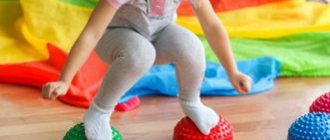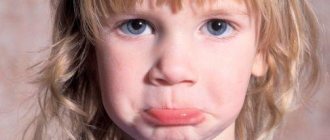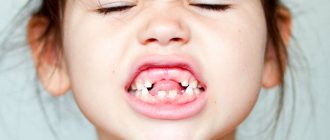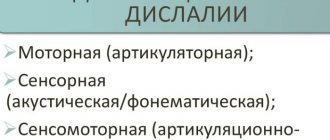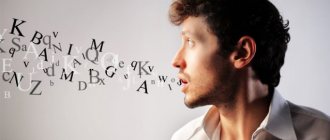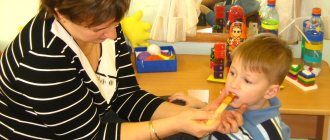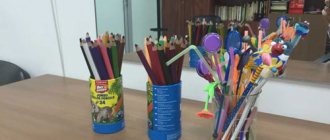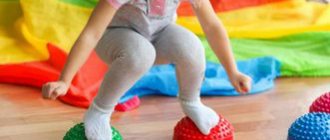Gnosis and its disorder
"Gnosis" is a term that is translated from Greek as "recognition." Consequently, its violations are violations of recognition, which is carried out by sensory perceptions. A person’s orientation in the surrounding world is directly related to the determination of the spatial relationship, size, shape of objects, as well as to the understanding of the meaning contained in the name of each of them. The stock of information about the world is formed from the analysis and synthesis of various streams of sensory impulses, and then stored in our memory. If the higher gnostic mechanisms are affected, the receptor apparatus, as well as the transmission of sensory impulses, are preserved. However, their interpretation and comparison of the received data with the images stored in memory are disrupted, which leads to agnosia, in which gnosis is upset. This leads to the fact that the perception of objects is preserved, but at the same time the feeling of their “familiarity” is lost. As a result, the surrounding world, which was previously familiar to a person in detail, becomes alien, devoid of meaning, and incomprehensible.
Gnosis is something that should be imagined not simply as recognition, comparison of an image. This is a process of continuous clarification, updating, and specification. The image is stored in a memory matrix. It is updated due to repeated comparison with the received information.
The concepts of “gnosis”, “mnesis”, “praxis”
General provisions of the theory of systemic dynamic localization of VMF. Basic concepts in neuropsychology
In the conceptual apparatus of neuropsychology, two classes of concepts can be distinguished. The first is concepts common to neuropsychology and general psychology; the second is the actual neuropsychological concepts, determined by the specifics of its subject, object and research methods.
The first class of concepts includes such as “higher mental function”, “mental activity”, “psychological system”, “mental process”, “speech mediation”, “meaning”, “personal meaning”, “psychological tool”, “image” ", "sign", "action", "operation", "interiorization" and many others. The content of these concepts is presented in a number of manuals and monographs devoted to general psychological problems (L.S. Vygotsky, 1960; A.N. Leontiev, 1972, 1977; A.R. Luria, 1973, 1979; B.F. Lomov, 1984; A.V.Petrovsky, M.G.Yaroshevsky, 1996, etc.).
The second class of concepts consists of neuropsychological concepts proper, which reflect the application of general psychological theory to neuropsychology - a specific field of knowledge, the subject of which is the study of the brain organization of mental processes, emotional states and personality based on the material of pathology and, above all, on the material of local brain lesions. Taken together, these concepts constitute a certain system of knowledge or theory that, from a unified standpoint, explains the patterns of disturbances and restoration of higher mental functions in local brain lesions and substantiates ideas about their brain organization. This theory, on the one hand, is able to explain the diverse clinical phenomenology of mental disorders, and on the other hand, it can satisfactorily predict new facts and patterns.
The concepts of “gnosis”, “mnesis”, “praxis”
Gnosis is a collective concept for the processes of perceptual categorization (recognition) of stimuli of different modalities.
Subject visual gnosis
- the most important for orientation in the surrounding reality. Thanks to it, a person distinguishes objects. The formation of visual gnosis begins with the recognition of real objects and realistic images.
Color Gnosis
also develops gradually. First, the bright colors of the spectrum (red, blue, green) are mastered, then less bright ones - white, black, brown, orange.
Facial Gnosis
- a special type of visual gnosis. It is formed relatively in isolation from other types of visual-gnostic activity. The first thing a child visually assimilates is the face of the mother or someone close to him. Then the ability to distinguish and remember other faces is acquired. Needless to say, memory for faces is essential for communicating with other people throughout life.
Simultaneous Gnosis
- this is the ability to see complex images as a whole, to put details into a single whole, highlighting essential and secondary features.
Auditory gnosis
characterized by the need to perceive a sequence
of stimuli realized over
Tactile Gnosis
- this is the ability to recognize the surface and texture of a material by touch; recognize the shape of an object; and also receive heat and pain signals.
Mnesis – translated from Latin means memory. Instructions by A.R. Luria that visual memory (mnemonic activity, mnesis) is a necessary condition for the formation of writing and reading skills mnesis (memory, visual analysis and synthesis) Mnesis is visual memory!
Praxis is a practical (objective) action .
Impaired ability to reproduce these actions is called apraxia
It is fundamentally important that patients with apraxia lose the ability to perform movements and actions voluntarily . Involuntarily, these same actions can be easily performed by them
He divided all praxis actions into kinesthetic (sensitive) and kinetic (motor ), thus postulating the presence of two
- kinesthetic and kinetic.
Kinesthetic praxis A.R. Luria designated as afferent ,
and kinetic - as
efferent .
This clarified the understanding of praxis as one of the highest mental functions, and apraxia as its pathology.
The term afferent means “centripetal,” implying the direction of nerve impulses from the periphery to the center.”
The term efferent means " centrifugal", implying
The ability to perform meaningful objective actions without objects (by imitation) is called symbolic praxis .
occupies a special place . It indicates a significant degree of differentiation of hand actions.
Even more complex than digital praxis is oral praxis .
It is formed on the basis of less objective, and therefore more abstract, actions. Oral praxis movements include the ability to blow, click, click your tongue, puff out your cheeks, etc., according to instructions.
The most complex of all types of praxis is articulatory ,
those. the ability to pronounce speech sounds and their series (words).
Afferent articulatory praxis is the ability to reproduce isolated speech sounds, their articulatory patterns (postures), which are often also called speech kinesthesia or articulomes.
Efferent articulatory praxis is the ability to pronounce series
speech sounds.
| 7. The main directions for solving the problem of “brain and psyche” The first direction is “narrow” localization or theories of centers (a specific area responsible for PF). (Represented by F. Gall, K. Kleist, P. Broca, K. Wernicke and others) considered the g/m cortex, which is the substrate of the PF, as a collection of many centers of indecomposable mental abilities. Each of them is responsible for a specific PF. For example, for speaking, for writing, for reading, for thinking, for memory, etc. The second direction , opposing points of view, is anti-localizationism. The theoretical constructions of representatives of this direction (K. Goldstein, F. Goltz, K. Lashley) were based on clinical facts of spontaneous recovery of impaired functions; on facts, when no clear symptoms are visible in the presence of foci of brain damage. They considered the brain as a single undifferentiated whole, with which all PFs are equally associated, which were considered as indivisible mental abilities (the same as in the theories of localizationists). It has been suggested that all brain regions are equal in relation to the PF. It followed from this that it is not the location of the brain lesion that is important, but the volume of the lesion - the larger it is, the more functions are impaired. The third direction is eclectic. It tried to combine both. The hypotheses of the representatives (K. Monakov, G. Head) were confirmed by clinical data that there are areas in the g/m cortex, when damaged, violations of completely specific functions are found. It was assumed that elementary PFs (movements and sensitivity) could be localized, and complex ones associated with the processing of symbolic information (for example, thinking, imagination, etc.) should be correlated with the entire brain. |
| 8. The brain as a substrate of mental processes. The brain as a substrate of mental processes is a single system, a single whole, consisting of various sections and zones that perform different roles in the implementation of mental functions. All data (anatomical, physiological, clinical) indicate the leading role of the cerebral cortex in the cerebral organization of mental processes. In neuropsychology (based on the study of various local brain lesions), a structural and functional model of the brain was developed. This model was proposed by Alexander Romanovich Luria, who created it based on the study of a large number of patients with traumatic brain injuries. According to this model, the entire brain can be conditionally divided into three blocks: I block ENERGY or block regulating levels of brain activity; II block of INFORMATION RECEPTION, PROCESSING AND STORAGE; III block of PROGRAMMING, REGULATION AND CONTROL OF THE PROGRESS OF MENTAL ACTIVITY. |
| 9. Cortical fields and their function. There are three main groups of fields in the cortex: primary, secondary and tertiary fields. -Primary fields are associated with sensory organs and organs of movement on the periphery; they mature earlier than others in ontogenesis and have the largest cells. Each zone is responsible for a specific analyzer. These fields analyze individual stimuli entering the cortex from the corresponding receptors. When the primary fields are destroyed, so-called cortical blindness, cortical deafness, etc. occur. The fields are built by the topical principle, in which each section of the receptor surface corresponds to a specific section in the primary cortex (projection field). The representation of a receptor site depends on its functional significance. Primary fields analyze as much as possible the various parameters of a stimulus of a certain modality, and the characteristics of the stimulus are remembered. Primary fields are homogeneous in cellular composition, therefore they are designated as modality-specific (olfactory fields contain only olfactory cells). Despite the universality of the physiological and biochemical mechanisms that ensure the functioning of the brain, its different parts have different functional specializations, representing different modalities. -Nearby are secondary fields, or peripheral zones of analyzers, which are connected to individual organs only through primary fields. They serve to summarize and further process incoming information. Individual sensations are synthesized and determine the processes of perception. (gnostic field) When secondary fields are damaged, the ability to see objects and hear sounds is retained, but the person does not recognize them and does not remember their meaning. Both humans and animals have primary and secondary fields. -The furthest from direct connections with the periphery are the tertiary fields, or the overlap zones of the analyzers. Only humans have these fields. The fields are located outside the nuclear zones of the analyzers, located on the border of the occipital, temporal and parietal cortex and do not have access to the periphery. The neurons of these zones are multimodal, which ensures their response to generalized signs of external stimuli (associative field). The tertiary fields of the cortex are multifunctional; processes of higher analysis and synthesis take place here; based on the synthesis of afferent stimuli, goals and objectives are developed, and motor activity is programmed. Also, the integration of information in tertiary fields contributes to the formation of thinking (inner speech). With congenital underdevelopment of the tertiary fields, a person is not able to master speech and even the simplest motor skills. -A special area is the TPO area; it includes the temporal, parietal and occipital zones. It is responsible for the integration of complex mental functions. Differences in the functional specificity of primary, secondary and tertiary fields also determine differences in their ability to replace each other (compensate) in the case of pathology. The destruction of primary fields is not reparable, i.e. Lost physical hearing, vision, smell, etc. are not restored. The functions of damaged secondary fields are subject to compensation, carried out by connecting other, “healthy” brain systems and restructuring the way they operate. The functions of the affected tertiary fields are compensated relatively easily due to a variety of modalities, allowing one to rely on a powerful system of associations stored in each of them and between them. It is necessary, however, to remember that in this case, age thresholds and the time when restoration measures are started are important. 10. Functional asymmetry is a fundamental pattern of brain function. Functional asymmetry is a property of nervous tissue, characterized by the distribution of mental functions between the hemispheres of the telencephalon. One of the main properties is not only the specialization of the right or left hemisphere, but their careful and precise interaction. This phenomenon is considered as a fundamental law of the functioning of the higher nervous system. Lateralization is inherent not only in humans, but also in animals. The phenomenon of asymmetry is explained by one genetic model, which states that there is a certain gene that is a factor in the “right shift”. If this gene is in a dominant position, then most likely the person will be born right-handed, and vice versa: the recessive position of the protein determines the left-handedness of the individual. Interaction of hemispheres in functional asymmetry. Specialization exists thanks to two hemispheres. They are connected to each other by the corpus callosum - it is this that ensures the exchange of information between the left and right hemispheres. However, other neural spikes are also responsible for the “wiring”. They serve as channels through which the hemispheres synchronize with each other. Researchers have shown that each structure is involved in the exchange of specific information: - The anterior region of the corpus callosum is responsible for the exchange of somatosensory information. - The posterior part of the corpus callosum carries visual information. |
| 11. Stages, provisions and directions in the theory of functional asymmetry of the brain. The theory of functional asymmetry of the GM. Stage 1: The concept of left-hemisphere dominance was based on the absolute opposition of the left and right hemispheres. Stage 2: ideas about the relative dominance of the left hemisphere (in right-handed people) in relation to speech functions and speech-mediated mental processes. As well as the relative dominance of the right hemisphere in the implementation of gnostic functions. Stage 3: the problem of dominant hemisphere specificity, i.e. within the framework of the development of neuropsychology, there is a certain functional specificity of the hemisphere, i.e. Each hemisphere makes a certain contribution to the development of any mental function. That. At present, several basic provisions regarding interhemispheric asymmetry of the brain can be considered established. 1) Interhemispheric asymmetry of the brain, understood as differences in nature and not equal in importance to the participation of the left or right hemispheres in the implementation of various mental functions, is not global, but partial, which is why they distinguish: - motor asymmetries (this is the disparity in the motor activity of the arms, legs, face, half of the body, controlled by each hemisphere of the brain. varieties - manual or manual, skin, etc.) - sensory asymmetries (this is the disparity in the perception by each of the hemispheres of objects located to the right and left of the middle plane of the body: visual, auditory, tactile, olfactory) aya) - mental asymmetry (asymmetry of the brain organization of speech and other HMFs: perceptual, mnistic, intellectual) - morphological asymmetry (unevenness of the structure of the brain, in connection with this they distinguish: “pure right-handers” with the leading right hand, ear..., right-handed or retrained with a leading ear or eye there will be a left side, left-handed people with a leading left hand, ambidextrous people - both left and right) 2) Each specific form of interhemispheric asymmetry is characterized by a certain degree or measure, taking into account quantitative indicators, we can talk about strong or weak asymmetry. Using the asymmetry coefficient, one can highlight the weakness of one or another side of the GM. 3) Interhemispheric asymmetry of the brain in an adult is a product of biosocial mechanisms. The basis for the functional specialization of the hemispheres are innate mechanisms, however, in the process of child development, interhemispheric interaction and interhemispheric asymmetry occur. That. Functional asymmetry refers to the different nature and unequal importance of the participation of the left and right hemispheres of the brain in the implementation of mental functions. Directions in the study of problems of interhemispheric brain asymmetry. 1) Experimental study of specific disorders (verbal and non-verbal) of mental functions with damage to the symmetrical parts of the left and right hemispheres of the brain. 2) Comparison of holistic neuropsychological syndromes that arise when symmetrically located structures of the left and right hemispheres are damaged. The main neuropsychological syndromes described by A. R. Luria are predominantly syndromes of damage to the left hemisphere. The study of left hemisphere lesion syndromes began relatively recently. |
Visual agnosia
Visual gnosis is disrupted when the occipital cortex is affected. As a result, the patient sees an object, but cannot recognize it. There may be several options. In some cases, visual gnosis works as follows: a person is able to correctly determine the external properties of a given object (size, shape, color), but cannot recognize it. For example, a patient describes an apple as “something pink and round.” If you give a person this object in his hands, he will recognize it by feeling it. Thus, subject gnosis is violated. In other cases, the patient is unable to distinguish familiar faces. Then some patients with this disorder remember people by features such as a mole, clothing, etc. There are other cases of agnosia, when a person recognizes an object, can name its function and properties, but is not able to remember its name. They are classified as speech disorders.
In some cases, when visual-spatial gnosis is impaired, visual memory and spatial orientation may suffer. In fact, we can say that memory mechanisms are impaired even when a person does not recognize an object. Indeed, in this case it cannot be compared with the image located in the Gnostic matrix. There are also cases in which, upon re-examining an object, a person realizes that he has already seen it, but still cannot recognize it. A patient whose spatial orientation is impaired not only does not recognize houses, faces, etc., previously familiar to him, but can walk in the same place many times without realizing it. With visual agnosia, the ability to identify numbers and letters is often lost. In some cases, the ability to read is also lost. There are other options for how a violation of visual gnosis manifests itself. Patients with these disorders often say themselves: “I don’t see,” “I don’t know.” However, they see objects because they do not bump into them, they walk around them.
GNOSIS AND PRAXIS AND THEIR VIOLATIONS
Other mental disorders are discussed in the relevant chapters. In particular, speech disorders - see section 6.15.5; thinking disorders - see section 6.15.1; memory impairment - see section 6.6.
A. Gnosis and its disorders. Gnosis literally means “recognition.” Our orientation in the surrounding world is associated with recognizing the shape, size, spatial relationship of objects and, finally, with understanding their meaning, which is contained in the name of the object. This stock of information about the surrounding world consists of the analysis and synthesis of sensory impulse flows and is stored in memory systems. The receptor apparatus and the transmission of sensory impulses with lesions of higher gnostic mechanisms are preserved, but the interpretation of these impulses and the comparison of the received data with images stored in memory are disrupted. As a result, a disorder of gnosis arises - agnosia, the essence of which is that while the perception of objects is preserved, the feeling of their “familiarity” is lost and the surrounding world, previously so familiar in detail, becomes alien, incomprehensible, devoid of meaning.
Gnosis cannot be imagined as a simple comparison, recognition of an image. Gnosis is a process of continuous updating, clarification, and concretization of the image stored in the memory matrix, under the influence of its repeated comparison with the received information.
Total agnosia, in which there is complete disorientation, is rare. Much more often, gnosis is disrupted in any one analytical system, and depending on the degree of damage, the severity of agnosia varies.
Visual agnosia occurs when the occipital cortex is damaged. The patient sees the object, but does not recognize it. There may be various options here. In some cases, the patient correctly describes the external properties of an object (color, shape, size), but cannot recognize the object. For example, a patient describes an apple as “something round and pink,” without recognizing the apple as an apple. If you give this object into the patient’s hands, he will recognize it when he feels it. There are times when the patient does not recognize familiar faces. Some patients with this disorder are forced to remember people based on some other characteristics (clothing, mole, etc.). In other cases of agnosia, the patient recognizes an object, names its properties and function, but cannot remember what it is called. These cases belong to the group of speech disorders.
In some forms of visual agnosia, spatial orientation and visual memory are impaired. In practice, even if an object is not recognized, we can talk about violations of memory mechanisms, since the perceived object cannot be compared with its image in the Gnostic matrix. However, there are cases when, when an object is presented again, the patient says that he has already seen it, although he still cannot recognize it. If spatial orientation is impaired, the patient not only does not recognize previously familiar faces, houses, etc., but can also walk in the same place many times without knowing it.
Often, with visual agnosia, recognition of letters and numbers also suffers, and loss of reading ability occurs.
Auditory agnosia occurs when the temporal lobe is damaged in the area of Heschl's gyrus. The patient cannot recognize previously familiar sounds: the ticking of a clock, the ringing of a bell, the sound of pouring water. Possible impairment of recognition of musical melodies - amusia.
In some cases, the determination of the direction of sound is disrupted. In some types of auditory agnosia, the patient is unable to distinguish the frequency of sounds, such as metronome beats.
Sensitive agnosia is caused by impaired recognition of tactile, pain, temperature, proprioceptive images or their combinations. They occur when the parietal region is damaged. These include astereognosis, body diagram disorders. In some variants of astereognosis, the patient not only cannot identify an object by touch, but is also unable to determine the shape of the object or the features of its surface. Sensitive agnosia also includes anosognosia,
in which the patient is not aware of his defect, for example paralysis. Phantom sensations can be attributed to disorders of sensitive gnosis.
When examining children , it should be borne in mind that a small child cannot always show parts of his body correctly; The same applies to patients suffering from dementia. In such cases, there is, of course, no need to talk about a disorder of the body diagram.
Taste and olfactory agnosia are rare. In addition, the recognition of smells is very individual and is largely related to a person’s personal experience.
B. Praxis and its disorders. Praxis refers to purposeful action. A person learns a lot of special motor acts in the course of life. Many of these skills, being formed with the participation of higher cortical mechanisms, are automated and become the same integral human ability as simple movements. However, when the cortical mechanisms involved in the implementation of these acts are damaged, unique movement disorders arise - apraxia, in which there is no paralysis, no disturbances of tone or coordination, and even simple voluntary movements are possible, but more complex, purely human motor acts are disrupted. The patient suddenly finds himself unable to perform such seemingly simple actions as shaking hands, fastening buttons, combing his hair, lighting a match, etc. Apraxia occurs primarily when the parieto-temporo-occipital region of the dominant hemisphere is damaged, and both halves of the body are affected. Apraxia can also occur with damage to the subdominant right hemisphere (in right-handed people) and the corpus callosum, which connects both hemispheres. In this case, apraxia is detected only on the left. With apraxia, the plan of action suffers, i.e. compiling a continuous chain of motor automatisms. Due to a violation of the action plan, when trying to complete a task, the patient makes many unnecessary movements.
In some cases , parapraxia when an action is performed that is only vaguely reminiscent of the given task. perseverations are also observed i.e. getting stuck on some action. For example, the patient is asked to make an inviting movement with his hand. After completing this task, they offer to wag their finger, but the patient still performs the first action.
In some cases, with apraxia, ordinary, everyday actions are preserved, but professional skills are lost (for example, the ability to use a plane, screwdriver, etc.).
According to clinical manifestations, several types of apraxia are distinguished: motor, ideational and constructive.
Motor apraxia.
The patient cannot perform actions according to instructions or even imitation. He is asked to cut paper with scissors, lace a shoe, line paper with a pencil and ruler, etc., but the patient, although he understands the task, cannot complete it, showing complete helplessness. Even if you show how this is done, the patient still cannot repeat the movement. In some cases, it turns out to be impossible to perform such simple actions as squatting, turning, clapping your hands. A type of motor apraxia is motor aphasia (Broca's aphasia, apraxia of speech).
Ideatorial apraxia.
The patient cannot carry out actions on a task with real and imaginary objects (for example, show how to comb one's hair, stir sugar in a glass, etc.), while at the same time the actions of imitation are preserved. In some cases, the patient can automatically perform certain actions without thinking. For example, he purposefully cannot fasten a button, but performs this action automatically.
Constructive apraxia.
The patient can perform various actions by imitation and by verbal orders, but is unable to create a qualitatively new motor act, put a whole out of parts, for example, make a certain figure out of matches, put together a pyramid, etc.
Some variants of apraxia are associated with impaired gnosis. The patient does not recognize the object or his body diagram is disturbed, so he is unable to perform tasks or performs them uncertainly and not entirely correctly.
It is important to remember that praxis develops as the child matures; young children cannot yet perform such simple actions as combing their hair, fastening buttons, etc.
Auditory agnosia
They occur when the temporal lobe is affected in the area of Heschl's gyrus. In this case, a person cannot recognize sounds that were previously familiar to him: the sound of water, the ringing of a bell, the ticking of a clock, etc. Auditory gnosis in this case is impaired. Amusia occurs when the patient is unable to identify musical melodies. The directions of sounds cannot be distinguished also with auditory agnosia. With some of its types, the patient cannot determine their frequency.
Sensitive agnosia
There are also sensitive agnosias, which arise as a result of impaired recognition of temperature, pain, tactile, proprioceptive images, as well as their combinations. These disorders appear in case of damage to the parietal region. These include, for example, body diagram disorder, or astereognosis. In some cases, a person is not only unable to identify an object by touch, but also to form an idea of its shape and surface features. Anosognosia also refers to sensitive agnosia. With it, a person is not aware of his defect, for example, paralysis. Sensitive agnosia includes phantom disorders.
When do apraxia appear?
When the cortical mechanisms that are involved in these processes are affected, apraxia appears - special movement disorders. In this case, there are no violations of coordination or tone, no paralysis, it is even possible to carry out simple voluntary movements. However, more complex motor acts, purely human ones, are disrupted. As a result, the patient cannot perform simple actions such as lighting a match, combing his hair, fastening buttons, shaking hands, etc. Apraxia appears mainly when the dominant hemisphere is affected (parieto-temporo-occipital region). However, both halves of the human body suffer.
Apraxia can also appear in case of disturbances in the functioning of the subdominant right hemisphere (if we are talking about right-handers) and the corpus callosum, which connects both hemispheres of a person. In this case, it is defined only on the left. As a result of apraxia, the plan of action suffers. In other words, the continuous chain in which motor automatisms are combined turns out to be disrupted. Because of this, the patient, trying to complete this or that task, makes many unnecessary movements.
What is praxis?
Praxis is a series of functions and actions that are performed by the body automatically.
For example, a person breathes from birth, then learns to walk and talk; later these actions are performed automatically, that is, thoughtlessly and do not require the essence of this action to be determined in advance. The automatic execution of certain actions is carried out due to signals that pass through the cerebral cortex.
If such signals are disrupted in a person, then in this case we can talk about apraxia, that is, praxis disorders.
Definition 1
So, praxis is the normal functioning of the body to perform certain actions, and apraxis, on the contrary, is defects in the implementation of praxis.
Note 1
In speech therapy and other sciences, apraxis is studied as the opposite phenomenon to praxis, since it is it that is of particular interest to scientists, and, most importantly, people need to be saved from it.
It is generally accepted that when a person experiences apraxis, then most likely there is a violation of the dominant hemisphere (temporal, parietal or occipital region).
It should also be noted that this disease manifests itself in the fact that a person is unable to perform the simplest actions, for example: combing one’s hair, brushing one’s teeth, walking independently or fastening a button, etc. At the same time, the patient is sometimes quite capable of performing complex actions.
The general state of health with this disease is also quite normal, that is, tone, activity - everything is normal.
Thus, people who suffer from apraxia cannot work or lead a normal lifestyle, which complicates their general position in society.
Speech therapy also deals with patients with apraxia and tries to use various techniques aimed at improving the patient’s condition.
Most often in speech therapy, the following methods of treating patients with apraxia are used:
- Special physical exercises . Specially developed physical exercise techniques are aimed at strengthening muscles and memorizing actions for patients with apraxia. This helps to “deceive” the brain and makes it possible to sometimes perform basic actions without the help of others;
- Psychological health promotion . People suffering from this disease also have mental disorders, as it is not easy for them to adapt to society, and, most importantly, to accept themselves in this situation. Speech therapists, using various psychological techniques, try not only to restore the physical health of patients and create a healthy psychological atmosphere, which also contributes to the recovery of patients.
Parapraxia
In some cases, parapraxia is detected. It involves performing an action that only vaguely resembles a task. Varieties of perseveration are also observed. In this case, a person gets stuck on certain actions. For example, the patient is asked to make an inviting movement with his hand. He is then asked to wag his finger, but the person again performs the first movement.
In some cases of apraxia, ordinary, everyday actions are preserved, but professional skills are lost. For example, the ability to use a screwdriver, plane, etc. is lost.
Motor apraxia
In this case, the person is not able to perform the necessary actions according to the instructions, and possibly also by imitation. For example, he is asked to lace a shoe, cut paper with scissors or line it with a ruler and pencil, etc. The patient understands the task, but is unable to complete it. He is not even able to repeat the movement if he is shown clearly how it is done. In some cases, a person cannot perform even the simplest action, such as clapping, turning or squatting. Motor aphasia, also called apraxia of speech or Broca's aphasia, is one of the varieties of this disorder.
VI. Praxis . The study of praxis is preceded by a thorough acquaintance with the data of a clinical analysis of motor functions: the strength and accuracy of movements, the state of muscle tone, the presence of hyperkinesis, etc., not only in the limbs (arms), but also in the articulatory apparatus.
35. Ideational and ideomotor praxis are explored further by asking the patient to perform actions with real objects, for example: light a match, comb his hair, unbutton and fasten a button, etc.; actions with imaginary objects, for example: show how to saw wood, hammer nails, stir sugar in a cup; symbolic actions: say goodbye, beckon with a finger, give a military salute, etc.
36. Constructive praxis. Folding from sticks according to the model of simple and more complex geometric shapes: square, rhombus, complex broken line of 10 linear segments (complex figure of Ray). Drawing (without a sample) according to the assignment: house, man, star, cube, daisy, dial. Drawing geometric shapes and flipping them 180°, such as a triangle with a shaded corner, a trapezoid with a triangle inside, etc.
37. Dynamic praxis (according to A. R. Luria). The “fist-palm-rib” test is performed by visual demonstration with one (healthy) hand; in this case, the patient is asked to hit the table sequentially with the hand clenched into a fist, flat and with an edge: fist - palm - edge; rib - fist - palm; palm - rib - fist, etc. Test for reciprocal coordination of movements (according to N. I. Ozeretsky), in which the patient is asked to simultaneously clench one hand into a fist and straighten the other; these movements alternate several times. The test is carried out in the absence of paresis in patients. Test for mastering a given sequence of movements of the fingers (tapping on the table) by visual demonstration, for example: II-III-IV fingers; I—V—I fingers and other options. A test for mastering a given sequence of finger movements according to a proprioceptive demonstration (the subject’s eyes are closed, the order of movements is demonstrated using passive finger movements by the experimenter), for example: I - III - II fingers; II - I - IV fingers, etc. Reproduction of a given graphic stereotype, for example: fill the line as quickly as possible with the following series: XX000XX000XX. . . or 6660066600... There may be other variants of tests for dynamic praxis, during which special attention is paid to deautomation of the motor act, perseveration, echopraxia.
38. Oral praxis. Simple movements of the lips and tongue: stick out your tongue, puff out your cheeks, place your tongue between your teeth and lower lip. Complex movements of the lips and tongue: whistle, “blow out” a burning candle, spit, kiss, etc.
When assessing the results of tests in the “praxis” section, it is necessary to find out what violations may be caused by speech disorders (inability to retain a series of words, alienation of the meaning of words, etc.). It is also necessary to characterize the features of motor operations (discoordination disorders, perseveracia, echopraxia, exhaustion, etc.), their adequacy in relation to the situation given by the experimenter (for example, in response to a proposal to beckon with a finger, threaten it, etc.). The subject’s ability to correctly perceive clothing in relation to his own body (dressing air) is taken into account, as well as errors in the left (more often) or right (less often) visual field and other features of subtle purposeful movements and actions.
VII. Non-speech auditory gnosis . Tests for recognition of non-speech sounds, including musical melodies and rhythms, are most often carried out in the process of studying speech function, but are separated into a separate section. In this case, just as in the study of various aspects of speech, one first gets acquainted with the state of the more elementary aspects of hearing and auditory attention.
39. Recognition of familiar sounds and their sequences: rustling of paper, clinking of coins, clapping of hands, etc.
40. Recognition (identification) of rhythms. The experimenter sets the rhythm by tapping on the table - the subject must find an identical one among others on the diagram.
41. Recognition of the melodies of famous songs sung by the experimenter.
42. Reproduction of rhythmic sequences presented by ear. In one version of the experiment, the patient may be asked to hold his tongue between his teeth.
43. Play any melodies familiar to the subject.
VIII. Body diagram.
44. Right-left orientation. The subject is asked to show: his left hand, the right hand of the experimenter (sitting next to the subject), the left hand of the experimenter (sitting opposite the subject with his arms crossed on his chest).
45. Finger gnosis. The subject is asked to show his fingers according to verbal instructions: index finger, little finger, middle finger, thumb, little finger, ring finger. By imitation: show III finger, V finger, II finger, III finger, IV finger, I finger. In this case, the experimenter shows the fingers alternately of the left and right hands, changing the position of the hand in space each time. A test is also often used, when the patient is asked to find out, with his eyes closed, which fingers are moving passively by the doctor.
46. Reproduction of finger poses by imitation. The experimenter sits opposite the subject.
47. Reproduction of the relative position of the hands of two hands. The experimenter also sits opposite the subject. The last two tests are equally relevant to the study of praxis, in particular the visual-spatial organization of movements. When analyzing errors, one should take into account data from praxis studies, in particular drawings of “faces”, “daisies”, etc., in which errors in the left visual field may be noted. Data from clinical and psychological observation of the patient are also taken into account (his lack of awareness of paralysis and other defects - anosognosia, sensory impairment and other disorders). It is also necessary to note impairments in finger naming in studies of finger gnosis.
reading and counting – previous | next – gnosis
Methods of psychological diagnosis and correction in the clinic. Content
Constructive apraxia
Let's move on to the next type of apraxia, constructive. In this case, the patient is able to perform various actions both by verbal orders and by imitation. However, he cannot carry out a new motor act, or create a whole from parts. For example, he is not able to make a certain figure from matches, put together a pyramid, etc.
Features of the examination
Note that some types of apraxia are observed in disorders of gnosis. The person’s body diagram is disturbed, or he does not recognize the object, so he cannot perform tasks or does not perform them quite correctly or is uncertain.
It must be taken into account that praxis is always formed throughout the child’s development. Therefore, it is natural that young children cannot perform simple actions (fastening buttons, combing their hair, etc.).
Now you know what is meant by such terms as “gnosis” and “praxis”, that these are special mechanisms, disturbances in the functioning of which lead to corresponding disorders. The ability to correctly determine the cause of disorders is the key to the successful work of a psychiatrist.
System for examining praxis and gnosis in preschool children with motor alalia
Bibliographic description:
Matvienko, E. N. System for examining praxis and gnosis in preschool children with motor alalia / E. N. Matvienko, O. D. Minaeva. — Text: immediate // Pedagogy today: problems and solutions: materials of the II International. scientific conf. (Kazan, September 2021). — Kazan: Young scientist, 2021. — pp. 68-71. — URL: https://moluch.ru/conf/ped/archive/270/12847/ (access date: 10/18/2021).
Speech therapy examination is aimed at identifying violations of various components of the speech system, their nature, as well as depth and degree.
The following principles can be identified as the basis for the diagnostic system [2]:
- The principle of an integrated approach. During the examination, the interaction of all specialists is necessary. Direction: medical, pedagogical and psychological.
- The principle of the systems approach is based on the idea of speech as a complex functional system, the structural components of which are in close interaction. In this regard, the study of communicative components involves identifying all disturbed aspects of the speech functional system: (phonetics, phonemics, vocabulary, grammar, syntax).
- The ontogenetic principle involves the development of a survey taking into account the sequence of appearance of forms of communication and speech functions, as well as types of activities in ontogenesis.
- The principle of accounting for the leading type of activity. When conducting an examination of children with alalia, it is necessary to start from the emotional involvement of the child; accordingly, all tasks should be presented in an interesting playful form.
- The etiopathogenetic principle presupposes the structure of the disorder, the causes, what is primary and what is secondary?
- The principle of dynamism provides for the study of the child.
Motor alalia is a systemic underdevelopment of expressive speech of a central organic nature, caused by the immaturity of linguistic operations in the process of generating a speech utterance with the relative preservation of semantic and sensorimotor operations [2].
The study of praxis and gnosis in preschool children with motor alalia is carried out according to the neuropsychological method of L. S. Tsvetkova [3].
Non-speech examination methods mean the study of motor functions: gnosis and praxis. Research using non-speech methods can reveal disorders of the parietal lobe, premotor and posterior frontal regions, and occipital regions.
Gnosis (Greek origin) recognition [1]. With the help of sensory (smell, sight, taste, touch, hearing) perception, a person is capable of recognizing surrounding objects.
The term praxis is (Greek origin) the ability to perform purposeful voluntary movements and actions [1]. It should be noted that in this case we are talking about purposeful movement (nervous tics and other neurological diseases manifested by muscle twitching are not included in this group).
The study of gnosis in preschool children with motor alalia is carried out in the following areas:
The diagnostic system is presented in the table.
Table 1
System for examining gnosis in preschool children with motor alalia
| № | Contents of methods |
| I | Study of Gnosis |
| 1 | Perception of objective, realistic images Instructions “What is drawn here?” It is important to note at this stage that the child follows with his eyes from bottom to top and/or from right to left (vectors of perception). Next to the technique, a drawing is opened and the child is asked to name the two, then three, images shown in the same order. We have presented several options for pictures; in the study we use option 1, 2, 3. |
| 2 | Crossed out images Instructions “What is drawn here?” |
| 3 | Poppelreuter figures (overlaid images). Instructions: “What is drawn here?” Option 1. The child is presented with several options for pictures; option 1, 2, |
| 4 | Unfinished images Instructions: “What is drawn here?” |
| 5 | Chimeric images Instructions: “What is drawn here?” If the child does not immediately notice the “catch,” you should ask the question: “Is that all? Is everything drawn correctly? The child is presented with several options for pictures; option 1, 2, 3 is used. |
| 6 | Facial Gnosis The subject is presented with a picture depicting people's faces. Instructions: “Who is pictured here?” After listing, the experimenter asks more difficult questions: the experimenter shows “How are these people different?”; the experimenter asks the child to point out the difference in age, clothing, hairstyle, etc. |
| Conclusion: 0 points — performs the task independently without the help of an experimenter; 1 point - a number of minor errors are noted that are corrected by the child himself, practically without the participation of the experimenter; 2 points - completes the task after stimulating assistance, hints and leading questions; 3 points - failure to complete the task. |
The study of praxis in preschool children with motor alalia is carried out in the following areas:
The diagnostic system is presented in the table.
table 2
System for examining praxis in preschool children with motor alalia
| № | Contents of methods |
| I | Study of kinesthetic praxis. |
| 1 | Praxis of poses based on a visual model Instructions: “Do as I do.” The experimenter sequentially demonstrates to the child a number of manual poses: - index and thumb (ring, middle) fingers folded into a ring; - the hand is clenched into a fist, but the little finger is pointed forward; - the hand is clenched, but the index finger and little finger are pointed forward, etc. Examining the right and left hand. |
| 2 | Praxis of poses according to the kinesthetic model. Instructions: “Close your eyes. Can you feel how I put my fingers together?” The experimenter puts the child's fingers into manual poses. Then he straightens the child’s hand and asks him to reproduce the given pose. |
| 3 | Transferring poses according to a kinesthetic pattern. Instructions: “Close your eyes. Can you feel how I put my fingers together? Fold them in exactly the same way on the other hand.” The transfer of poses is carried out first from the leading hand (for right-handers from right to left), and then vice versa (from left to right). |
| 4 | Oral praxis. Instructions: “Do as I do.” The experimenter performs the following actions: — smiles, stretches his lips into a tube; - puffs out cheeks; - sticks out his tongue straight, raises it to his nose, runs it over his lips; - frowns, raises eyebrows, etc. Every movement is reproduced by the child. An option would be to perform this test according to instructions, such as: “Reach your tongue to your nose” or “Frown.” But in this case, it is necessary to differentiate secondary errors that arise in the child due to misunderstanding, etc. |
| II | Study of kinetic (dynamic) praxis |
| 1 | "Fist- rib- palm". Instructions: “Do as I do.” The experimenter performs a series of movements: - a fist placed on the edge, an outstretched palm placed on the edge, the palm lying on the table; — only the poses change, the hand itself does not change its location. Twice the experimenter performs the task with the child slowly and silently, then the experimenter invites the child to complete the exercise at a faster pace. Then with your tongue fixed and your eyes closed. Both hands are examined in turn. |
| 2 | Graphic test “Fence” Instructions: The experimenter draws a sample for the child: Instructions: “Continue the pattern without lifting the pencil from the paper.” |
| 3 | Reciprocal hand coordination. Instructions: “Put your hands on the table. Do as I do". The hands are placed side by side: one is extended, the other is folded into a fist, then at the same time the first hand is clenched into a fist, and the second is straightened, while the hands remain in one place. The experimenter performs the task together with the child, then independently without the help of an adult. |
| 4 | Oral kinetic praxis. Instructions: “Do as I do.” Experimenter, for example: - smiles and frowns; - clicks his tongue several times, whistles twice and clicks his tongue; — touches the left corner of his mouth with his tongue, then the right corner, then puffs out his cheeks. |
| Conclusion: 0 points — performs the task independently without the help of an experimenter; 1 point - a number of minor errors are noted that are corrected by the child himself, practically without the participation of the experimenter; 2 points - performs the task after stimulating assistance; 3 points - failure to complete the task. |
Summarizing the results of the examination, we write a conclusion.
Literature:
- Lalaeva, R.I., Paramonova, L.G., Shakhovskaya, S.N. Speech therapy in tables and diagrams - M.: Paradigma, 2017–216 p.
- Speech therapy: Textbook for students of defectology. fak. ped. universities / Ed. L. S. Volkova, S. N. Shakhovskaya. - M.: VLADOS, 2008. - 680 p.
- Tsvetkova, L. S. Methods of neuropsychological diagnostics of children - M.: Cogito-center, 2008. - 128 p.
Key terms
(automatically generated)
: instruction, motor alalia, experimenter, score, picture option, child, hand, diagnostic system, kinesthetic sample, child himself.
